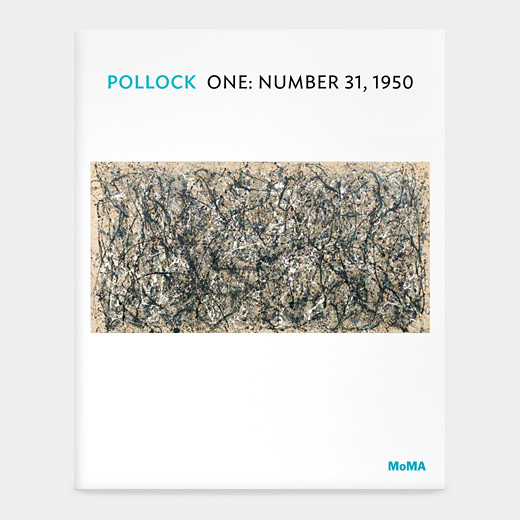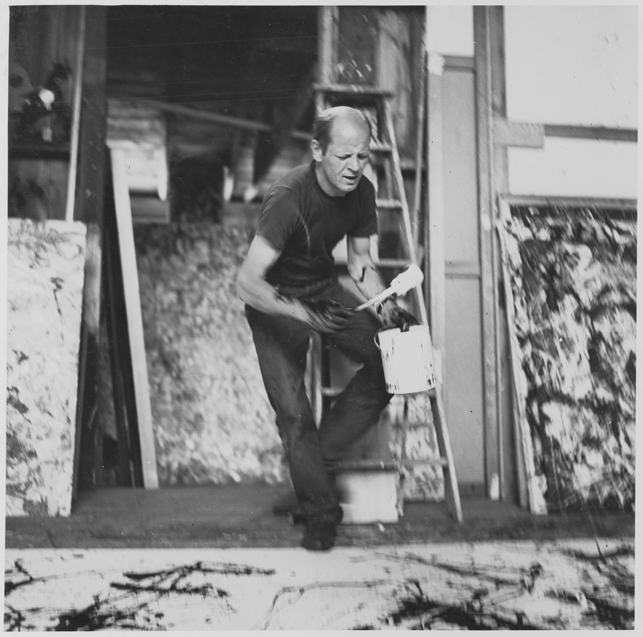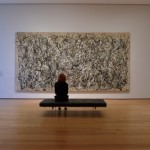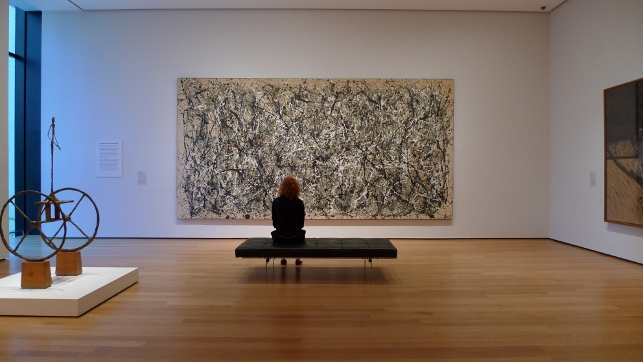If you’ve been following the Jackson Pollock Conservation Project on Inside/Out, you know that Jackson Pollock’s monumental painting One: Number 31, 1950 underwent some changes in our Department of Conservation this past spring after conservators discovered sections of overpaint on its surface, vestiges of a restoration campaign from the 1960s. You can follow the entire process here.
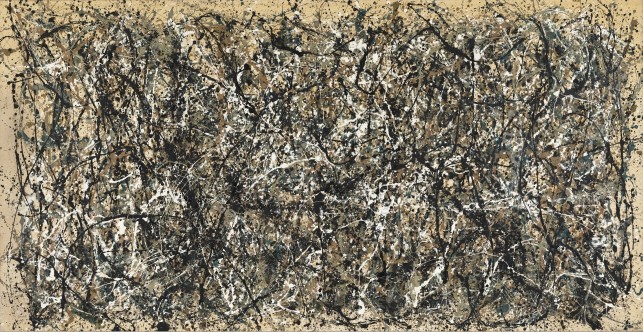
Jackson Pollock. One: Number 31, 1950. The Museum of Modern Art, New York. Sidney and Harriet Janis Collection Fund (by exchange). © 2013 Pollock-Krasner Foundation/Artists Rights Society (ARS), New York
The newest book in our One on One Series, Pollock: One: Number 31, 1950, also examines the history of this specific painting, but in an entirely different way. Author Charles Stuckey’s essay begins its investigation before the painting’s inception and follows it to the present day, considering its legacy and influence, which is visible in numerous contemporary artworks included in the book. In the late 1940s, Pollock began experimenting with a new method of painting, “drip painting” as it came to be known, where he would stand above a vast unframed piece of canvas and render kinetically: flinging, flicking, and, of course, dripping colors onto the canvas with various implements.
Pollock’s method eschewed the conventional notions of painting of the time, opting for raw, unstretched canvas and housepaint over prepared canvas and traditional oils, and darting around the floor of his barn studio rather than working quietly with a palette and easel. One: Number 31, 1950 is a masterful example of this signature style, a monumental work displaying Pollock’s energy and dexterity.
Did you know Jackson Pollock worked as a janitor at the Guggenheim Museum? Or that One: Number 31, 1950 was actually painted after Number 32, 1950 and before Number 30 (now called Autumn Rhythm) and Number 27, 1950?
Drawing from period magazine articles and quotes by Pollock, Lee Krasner, critics, and friends, Stuckey offers a narrative trajectory for the famed painting, following One: Number 31, 1950 from its premiere exhibition, to a stint in an apartment on Central Park West, to its final place in the collection of The Museum of Modern Art.
For more of Stuckey’s essay, download a preview of Pollock: One: Number 31, 1950 from our website.



